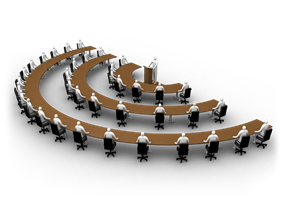Willy’s Cave Dwelling Notes #7 – Doing technical demos (Snippets, etc.)
We recently completed the internal technical event, during which the ALM Rangers presented no less than 25 technical sessions. Most went very well, while some crashed and burnt … giving us an opportunity to re-view the candid feedback and evaluations, cross-checking with our personal observations and coming up with a few do’s and don’ts.
 ALM Ranger Demo Reviews
ALM Ranger Demo Reviews
Here are my personal views. My hope is that we will initiate a candid discussion and eventually be able to create a crisp checklist for the ALM Rangers for future events.
- Ensure that the published title, description and objectives of the session match the delivery.
- Ensure your session has a story … it gives context and drives a session message.
- As tempting as it can be, avoid trying to mix a Breakout and a ChalkTalk session style.
- When demonstrating code, avoid switching context to notepad or other program to copy code from … use code snippets (see below) and stay within the IDE!
- Arrive early, take advantage of the pre-session tech check and be ready. Arriving late is disrespectful to the attendees and co-speakers and is usually punished with hiccups, chaos and bad reviews.
Anything else?
ALM Ranger Future Session Ideas
For future ALM Ranger presentations we are discussing the following changes:
Breakout Sessions (BRK)
- Preferably ONE, maximum TWO speakers, to reduce context switching during the session.
- Limit interactive discussions … use ChalkTalk for “chatty” sessions.
- Spin off optional “deep dive” ChalkTalks for a BRK, i.e.
- Breakout – Branching and Merging: Concepts
- ChalkTalk – Branching and Merging: Discussing Conflict Resolution
ChalkTalk Sessions (CT)
- Preferably and maximum TWO presenters, i.e. Project Owner and Project Lead, to represent the team and deliver the session
- Avoid Panel discussions
- We are getting mixed reviews on panel-discussions. Thoughts?
- Having “many” presenters makes session hard to coordinate and can waste invaluable time for some of the panel speakers
- Avoid late slots of the day … people not “chatty” when tired in the late afternoon
Default session layout
- Insert a 2min video to cover the ALM Rangers overview
- Concise, time-constrained and consistent messaging for all sessions
- No slides or coverage on who are Rangers and where do I find Ranger bits … covered in 1-2min video
- Create a story for each session and base all demos on the story
Would the new ideas work for you?
Code Snippets … 1,2,3
The code snippets are well documented on MSDN and Robert MacLean has even created another handy tool Rule18 for demos. The idea is that instead of switching between your IDE and another program which can be confusing and distracting, you use code snippets as an effective alternative to typing all the sample code yourself.
For example, I created the following snippet, which allows me to type vsarheader then click TAB twice and voila, the sample code header appears from nowhere, consistently and quickly ![]() , while keeping the context within the IDE.
, while keeping the context within the IDE.
1: <CodeSnippets
2: xmlns="https://schemas.microsoft.com/VisualStudio/2005/CodeSnippet">
3: <CodeSnippet Format="1.0.0">
4: <Header>
5: <Title>ALM Rangers - Header</Title>
6: <Description>ALM Rangers Default Sample Code Header</Description>
7: <Shortcut>vsarheader</Shortcut>
8: <Author>Visual Studio ALM Rangers</Author>
9: </Header>
10: <Snippet>
11: <Code Language="CSharp">
12: <![CDATA[// Copyright © Microsoft Corporation. All Rights Reserved.
13: // This code released under the terms of the
14: // Microsoft Public License (MS-PL, https://opensource.org/licenses/ms-pl.html.)
15: // This is sample code only, do not use in production environments]]>
16: </Code>
17: </Snippet>
18: </CodeSnippet>
19: </CodeSnippets>
References
- MSDN Code Snippets: https://msdn.microsoft.com/en-us/library/ms165394.aspx
- Rule 18, Author: Robert Maclean … find his blog here and his Rangers profile here. URL: https://rule18.codeplex.com/